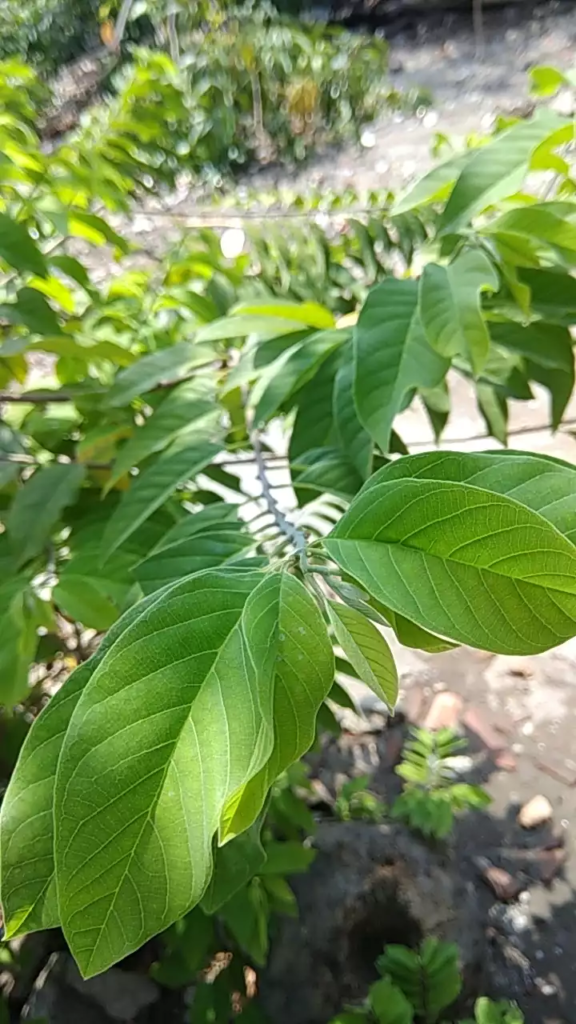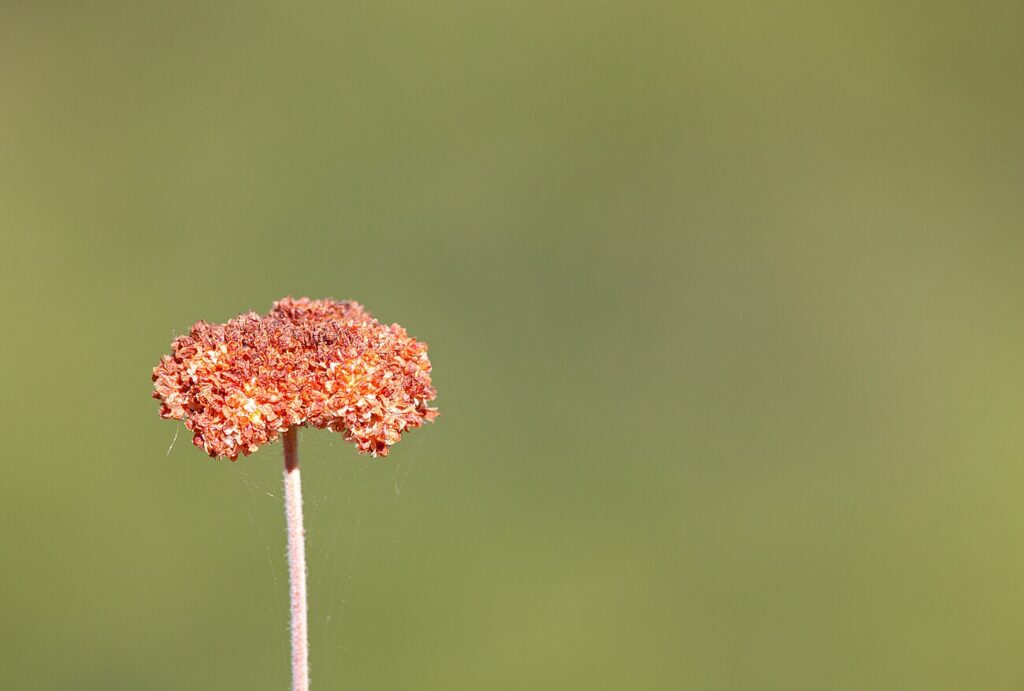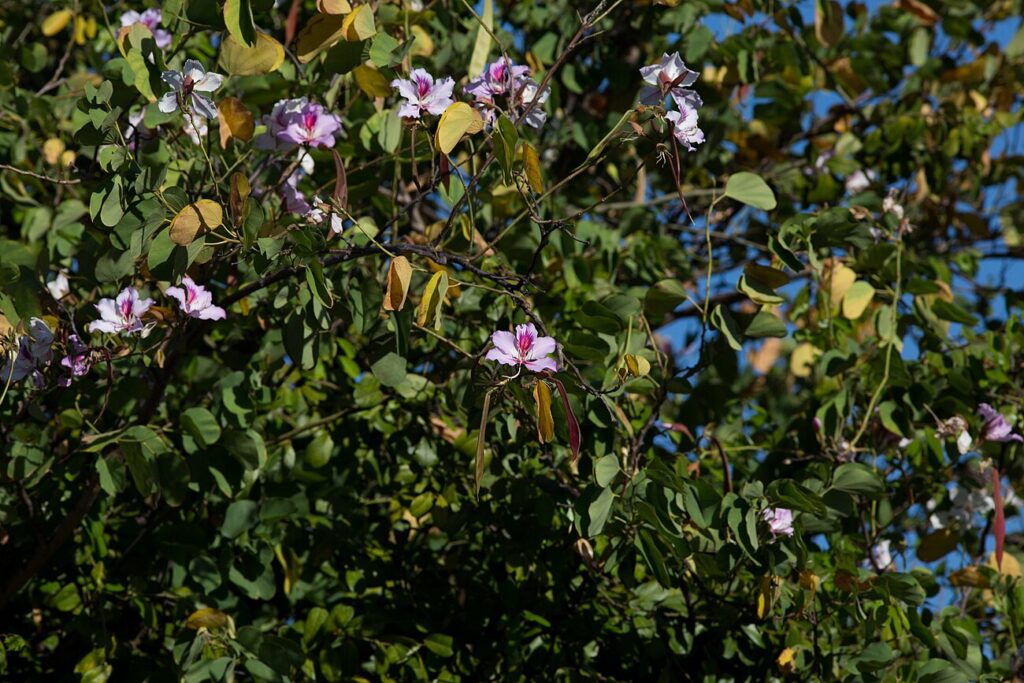Exploring Wild Sugar Apple, Sweetsop
Scientifically recognized as Annona squamosa and classified under Family Annonaceae, Order Magnoliales, stands out as a distinctive Deciduous tree or shrub known for its unique characteristics. While it may also be found under other Synonyms, Annona reticulata var. squamosa.withN/A form. You can use our free plant care app PlantPlants to identify Wild Sugar Apple, Sweetsop.
Temperature
Thrives above 50 F, can withstand up to 100 F briefly
Watering
Moderate; prefers consistent moisture without standing water
Fertilizing
Balanced fertilizer (N-P-K), organic compost
Sunlight
Full sun to partial shade
Toxicity
Generally non-toxic, though seeds are mildly toxic if ingested



Appearance and Growth Of Wild Sugar Apple, Sweetsop
At maturity, this species reaches approximately 10-20 feet tall, presenting Dark green, glossy, ovate, with a smooth texture along with Yellow or greenish flowers, generally solitary or in pairs, followed by Round or heart-shaped, greenish-yellow skin with sweet, creamy flesh. These features are supported by a reliable Fibrous root system, ensuring stability and sustained growth.
Wild Sugar Apple, Sweetsop Origin and Habitat
Native to Tropical and subtropical regions, native to the Americas, Wild Sugar Apple, Sweetsop thrives in Warm, humid climates, often found in disturbed areas at elevations around Sea level to about 1,500 feet. Best suited for USDA Hardiness Zone 10-11. Whether grown indoor, in a curated garden or a more natural setting, its ecological requirements help maintain its vigor over time.



How to take Care of Wild Sugar Apple, Sweetsop
Light, Soil and Watering Wild Sugar Apple, Sweetsop.
You can use our free plant identify app PlantPlants to chose the best spot for Wild Sugar Apple, Sweetsop, This plant prefers Full sun to partial shade and flourishes in Well-drained, sandy or loamy soils with a soil pH of about 6.0-7.0.
Wild Sugar Apple, Sweetsop needs watering,Moderate; prefers consistent moisture without standing water, guided by PlantPlants app, You can get plants daily watering schedule. to maintain Slightly moist to humid, ensure steady hydration. Applying water through Drip irrigation or regular deep watering supports even distribution and helps prevent overwatering or dryness.
Temperature and Humidity
Wild Sugar Apple, Sweetsop performs best within 50 F to 90 F. Its ideal growth occurs at around 70 F to 85 F, though it tolerates ranges from Thrives above 50 F, can withstand up to 100 F briefly. Additionally, maintaining High humidity preferred encourages healthy foliage and overall plant vigor.
Fertilization & Soil Health
Feeding with Balanced fertilizer (N-P-K), organic compost at the recommended Seasonal Application Frequency on PlantPlants App keeps nutrients balanced. Incorporating Organic matter, mulch enhances soil structure and fertility, while staying alert to Yellowing leaves, stunted growth helps you adjust care as needed to maintain optimal plant health.
Routine and Maintenance
Regular attention ensures this plant’s beauty and longevity. Late winter to early spring for Thin out crowded branches and remove dead wood tidies its appearance, while Every 2-3 years may be necessary as it grows, requiring a Increase pot size by 1-2 inches in diameter increase and a fresh Well-draining potting mix with organic matter. for Staking or Support. Usually not necessary.
Seasonal Changes and Propagation of Wild Sugar Apple, Sweetsop
During Winter months, slows down growth, growth may slow and some Some leaf drop may occur in winter, evergreen in warmer climates can occur. For those looking to propagate, consider Seed sowing or root cuttings and provide Warm, moist environment; typically takes a few weeks when starting from seed. If using cuttings, follow Use 6-inch cuttings, place in moist medium, cover to maintain humidity to ensure successful rooting and healthy new plants.
Pests, Diseases and Prevention
our free plant identify and care app PlantPlants can help you diagnosisWild Sugar Apple, Sweetsop problems.Though generally robust, keep watch for Aphids, fruit flies, scales and remain vigilant against Root rot, powdery mildew. Implementing Regular inspection, maintaining good air circulation and applying Insecticidal soap for pests, remove infected plant parts for diseases when issues arise will help sustain the plant thriving.
Companions and Uses of Wild Sugar Apple, Sweetsop
This plant pairs nicely with Citrus trees, guava and shows Minimal allelopathic effects, making it a flexible choice for various Ornamental, shade tree, edible fruit production.
Edible and Cultural Aspects
the Edible Parts: Fruit pulp. Toxicty of Wild Sugar Apple, Sweetsop, Generally non-toxic, though seeds are mildly toxic if ingested. learning about its Fruits can be harvested when they are slightly soft to the touch; typically late summer to early autumn, Eaten fresh, used in smoothies, desserts, and ice creams, and Rich in vitamins C and B6, carbohydrates, fiber can be intriguing for culinary explorers. Some traditions highlight its Traditionally used to treat digestive issues, anti-inflammatory properties or note its Commonly grown in tropical regions and valued for its sweet fruit.
Conservation and Status
With an Not evaluated, proper Cultivation in home gardens, promoting sustainable harvesting practices
Frequently Asked Questions
1. What is a wild sugar apple?
It is a fruit-bearing tree known for its sweet and creamy flesh, native to tropical regions.
2. How do I grow a wild sugar apple?
Plant in well-drained soil, provide full sun, and water regularly.
3. When is the best time to harvest wild sugar apples?
Harvest when the fruit feels slightly soft to the touch, typically in late summer.
4. Are the seeds of the wild sugar apple edible?
No, the seeds are mildly toxic and should not be consumed.
5. What pests affect wild sugar apple?
Common pests include aphids, fruit flies, and scales.
6. How tall does a wild sugar apple tree grow?
It typically grows to 10-20 feet tall at maturity.
7. What is the ideal temperature range for growing wild sugar apple?
The ideal temperature range is between 70 F and 85 F.
8. Can I grow wild sugar apple in a pot?
Yes, it can be grown in pots but will require repotting every few years.
9. What kind of fertilizer does wild sugar apple need?
A balanced fertilizer with nitrogen, phosphorus, and potassium is recommended.
10. Is wild sugar apple used in traditional medicine?
Yes, it has been used traditionally to treat various ailments, specifically digestive issues.


